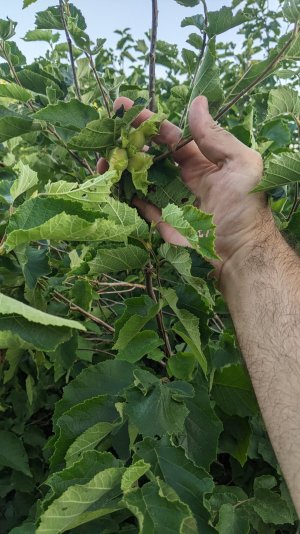Hoytvectrix
5 year old buck +
I think hazelnuts are one of the most versatile habitat plants there are. I find them in closed canopy forests or in the full sun. In the shade they definitely grow slower and have fewer nuts. I almost always find deer beds if there are a couple of clumps close enough together.
This is going to be a great year for the couple of native clumps I have found.
This is going to be a great year for the couple of native clumps I have found.

